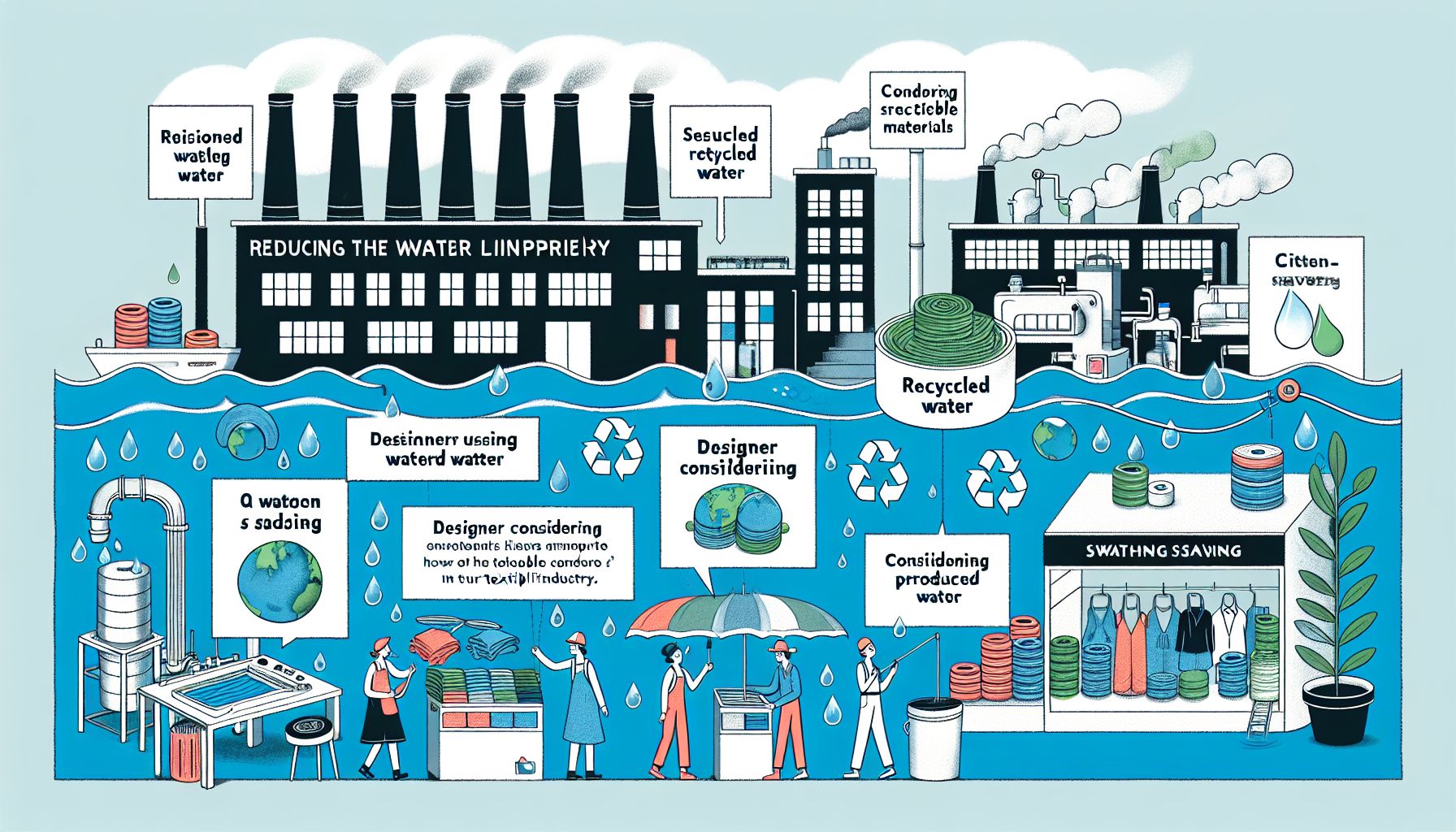Water is a precious resource that is essential for life on Earth, yet it is often taken for granted and wasted in various industries, especially the textile industry. The textile industry is known for its heavy water consumption, with estimates suggesting that it takes around 2,700 liters of water to produce a single cotton t-shirt. With increasing concerns about water scarcity and environmental sustainability, it is crucial for textile manufacturers to adopt strategies for reducing their water footprint.
Impact of Textile Industry on Water Resources
The textile industry is one of the largest consumers of water globally, primarily due to the dyeing and finishing processes involved in textile production. According to the World Bank, textile dyeing and treatment processes contribute to 17-20% of industrial water pollution globally. Wastewater from textile factories is often discharged untreated into water bodies, leading to contamination of freshwater resources and harming aquatic ecosystems.
To address these environmental challenges, textile manufacturers need to implement water conservation and pollution prevention measures throughout their production processes. By adopting sustainable practices and technologies, the textile industry can reduce its water footprint and minimize its impact on freshwater resources.
Strategies for Water Footprint Reduction
-
Water Recycling and Reuse: One of the most effective strategies for reducing water consumption in the textile industry is implementing water recycling and reuse systems. By treating and reusing wastewater from dyeing and finishing processes, textile manufacturers can significantly reduce their freshwater intake and discharge.
-
Water-Efficient Technologies: Investing in water-efficient technologies such as low-flow equipment, closed-loop systems, and water-saving dyeing methods can help reduce water consumption and improve overall efficiency in textile production.
-
Zero Liquid Discharge (ZLD) Systems: ZLD systems are designed to eliminate wastewater discharge by recycling and reusing all process water within the production facility. By implementing ZLD systems, textile manufacturers can minimize their water footprint and prevent pollution of water bodies.
-
Supply Chain Collaboration: Collaboration with suppliers, manufacturers, and other stakeholders in the textile supply chain is essential for implementing water conservation measures effectively. By working together to improve water management practices, the textile industry can achieve significant reductions in its water footprint.
Case Study: Levi’s Water1
One notable example of a textile company leading the way in water conservation is Levi’s. In 2011, Levi’s launched its Water1 initiative, which focuses on reducing water usage in denim production. Through innovative technologies and sustainable practices, Levi’s has successfully reduced the water footprint of its products by up to 96%.
Conclusion
As the demand for textile products continues to grow, it is crucial for the industry to prioritize water conservation and sustainability. By adopting strategies such as water recycling, efficient technologies, and supply chain collaboration, textile manufacturers can reduce their water footprint and contribute to the preservation of freshwater resources for future generations.
[source]1 Levi’s Water1 Initiative
In the Markdown format:
“`markdown
Strategies for Reducing Water Footprint in Textile Industry
Water is a precious resource that is essential for life on Earth, yet it is often taken for granted and wasted in various industries, especially the textile industry. The textile industry is known for its heavy water consumption, with estimates suggesting that it takes around 2,700 liters of water to produce a single cotton t-shirt. With increasing concerns about water scarcity and environmental sustainability, it is crucial for textile manufacturers to adopt strategies for reducing their water footprint.
Impact of Textile Industry on Water Resources
The textile industry is one of the largest consumers of water globally, primarily due to the dyeing and finishing processes involved in textile production. According to the World Bank, textile dyeing and treatment processes contribute to 17-20% of industrial water pollution globally. Wastewater from textile factories is often discharged untreated into water bodies, leading to contamination of freshwater resources and harming aquatic ecosystems.
To address these environmental challenges, textile manufacturers need to implement water conservation and pollution prevention measures throughout their production processes. By adopting sustainable practices and technologies, the textile industry can reduce its water footprint and minimize its impact on freshwater resources.
Strategies for Water Footprint Reduction
-
Water Recycling and Reuse: One of the most effective strategies for reducing water consumption in the textile industry is implementing water recycling and reuse systems. By treating and reusing wastewater from dyeing and finishing processes, textile manufacturers can significantly reduce their freshwater intake and discharge.
-
Water-Efficient Technologies: Investing in water-efficient technologies such as low-flow equipment, closed-loop systems, and water-saving dyeing methods can help reduce water consumption and improve overall efficiency in textile production.
-
Zero Liquid Discharge (ZLD) Systems: ZLD systems are designed to eliminate wastewater discharge by recycling and reusing all process water within the production facility. By implementing ZLD systems, textile manufacturers can minimize their water footprint and prevent pollution of water bodies.
-
Supply Chain Collaboration: Collaboration with suppliers, manufacturers, and other stakeholders in the textile supply chain is essential for implementing water conservation measures effectively. By working together to improve water management practices, the textile industry can achieve significant reductions in its water footprint.
Case Study: Levi’s Water1
One notable example of a textile company leading the way in water conservation is Levi’s. In 2011, Levi’s launched its Water1 initiative, which focuses on reducing water usage in denim production. Through innovative technologies and sustainable practices, Levi’s has successfully reduced the water footprint of its products by up to 96%.
Conclusion
As the demand for textile products continues to grow, it is crucial for the industry to prioritize water conservation and sustainability. By adopting strategies such as water recycling, efficient technologies, and supply chain collaboration, textile manufacturers can reduce their water footprint and contribute to the preservation of freshwater resources for future generations.
[source]1 Levi’s Water1 Initiative
“`
